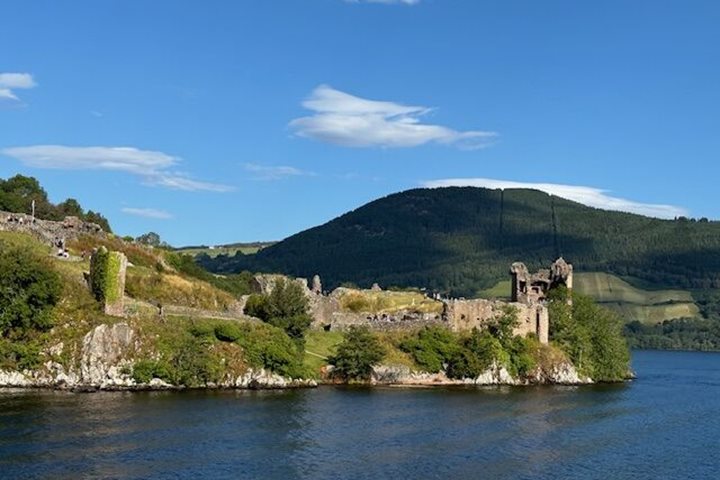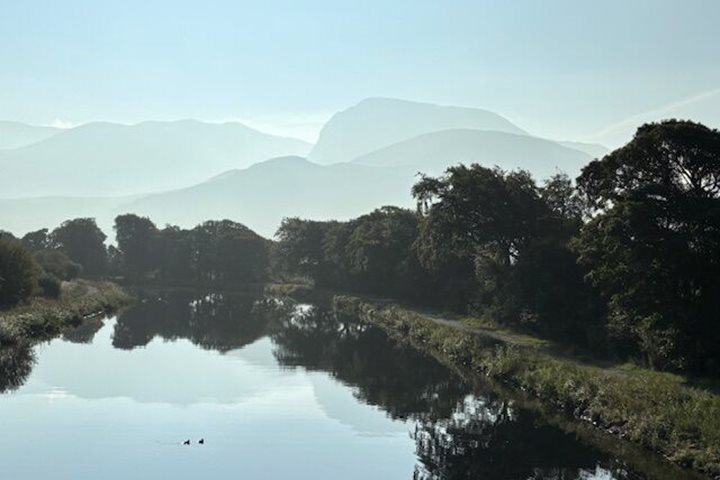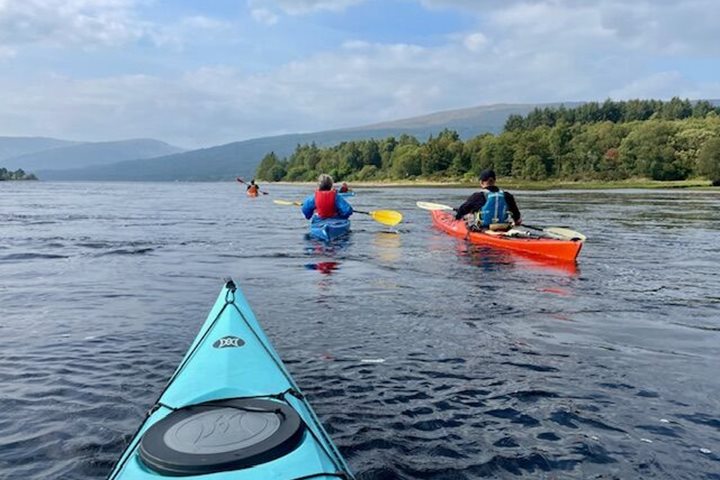The Isle of Iona was our main destination for the day. To reach Iona takes a bit of traveling as the small island lies off the tip of Mull, which is a larger island off the Scottish mainland. Our journey started with an early morning departure from Tobermory, sailing to Craignure on Mull where we boarded our red West Coast Motors bus, headed to the Iona ferry. Our bus driver provided an interesting commentary as we traversed across Mull, explaining the island’s natural history along with a good bit of local lore. Fifty-eight million years ago, Mull was a massive volcano, creating the terraced lava flows and basalt columns seen on the island today. Now, Mull is said to be a miniature Scotland, complete with high mountains, green glens, heather moorlands, and rugged coastlines.
We departed the bus at the small town of Fionnophort to make the ferry crossing, Iona stretching across the other side of the channel, the abbey and highest point of Dun I (332 feet) clearly visible. Centuries ago, St. Columba landed on Iona, coming over from Ireland in 563 A.D. Columba established a monastery on the isle, spreading the Celtic Christian faith across Scotland from the remote location. Much later, the site became a Benedictine monastery, with the great abbey built in the 13th century.
Walking the abbey grounds is a special experience, with the grandeur of the main abbey, the quiet of the cloister where Iona’s flora and fauna are carved into the pillars, and the stillness within the side chapels where flickering candles bring a sense of peace. Most of our group spent the morning on the abbey grounds, yet a few decided to visit the abbey after lunch and hike Dun I in the morning. The exuberant walkers ascended Dun I and enjoyed the spectacular views over the surrounding islands and out to sea, where the next land would be North America.
Mid-afternoon, we retraced our steps, taking the ferry and bus back across Mull to return to Craignure where Lord of the Glens lay waiting. Along the way, we stopped at Duart Castle, the ancestral home to the Maclean Clan. The castle is a big block of a building set on the coastline, its stone walls rising up from the rocky cliffs. Originally constructed in the mid-13th century, the castle fell to ruins after the Macleans lost it following the first Jacobite uprisings of the 17th century. Restored in the early 1900s, the castle now functions both as a museum and a residence, with exhibits and displays for visitors. We explored the castle with its narrow, spiral staircases then it was back to our boat.
The day ended with a scenic crossing over to Oban on the mainland, with views of Duart Castle along the way. After another fine dinner, many chose to take advantage of the warm, dry evening and stroll the town, rounding out another full day in the Scottish Highlands.







